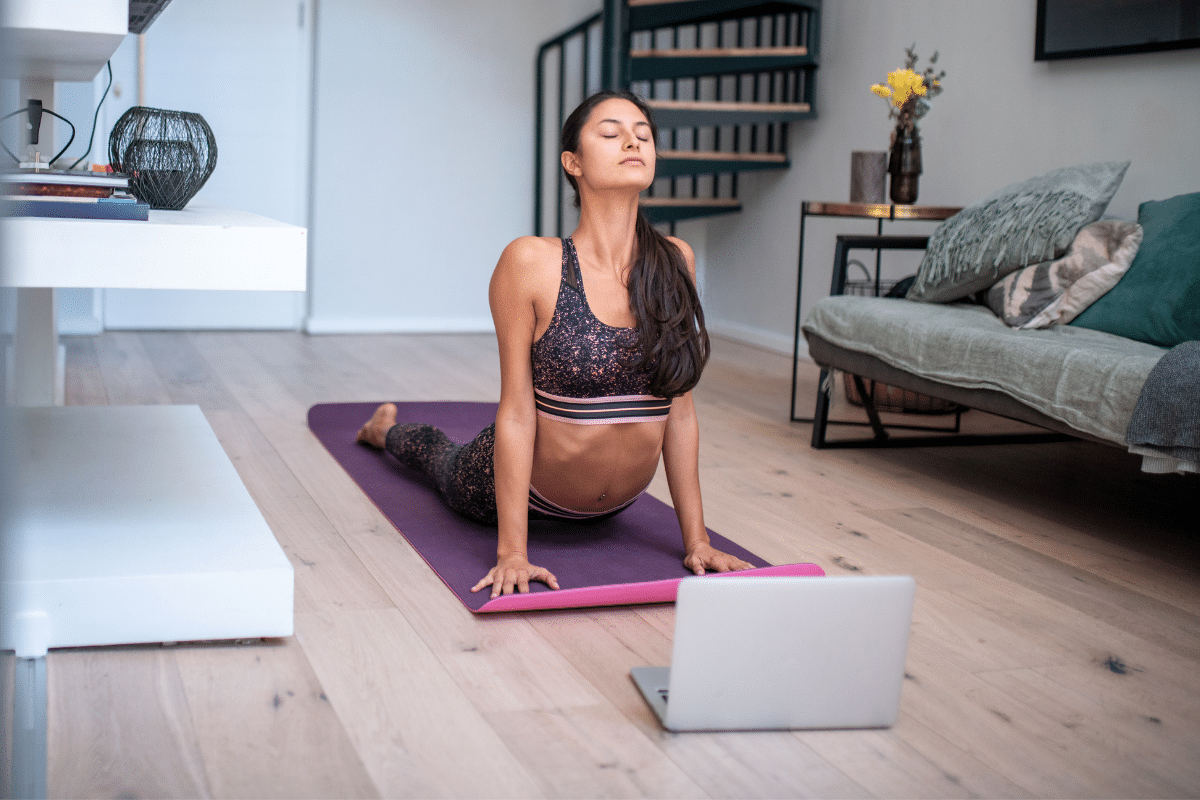
Yoga has dozens of benefits, including strengthening your body, reducing stress, and improving your balance. While it is often done in a class setting, it is easy to do at home because it doesn’t require any special equipment.
If you’re a beginner looking to practice yoga at home, don’t be intimidated by all the different methods, clothing, and gear out there. Find a free hour and a quiet space and follow these 5 tips to become a yoga pro in no time.
Tip 1: Get Familiar with Basic Yoga Poses
You’ve probably heard of downward-facing dog or child’s pose, but what do those poses actually look like? Before watching any classes online, familiarize yourself with some of the most common poses.
Yoga classes can feel fast as you transition from one pose to the next. Knowing the poses ahead of time can increase your confidence and comfort during an online or in-person class.
Additionally, doing yoga at home means there’s no instructor to correct your form. Performing poses incorrectly can lead to injury, so it’s important to study and practice the basic poses prior to taking a class, even in an online setting.
Tip 2: Use a Yoga Mat
While there’s no required equipment to do yoga at home, mats will increase your comfort and stability. Because mats have a non-slip surface, they help you balance without slipping, even when you get sweaty.
Depending on the pose, different parts of your body support your weight. Using a mat ensures your back, feet, hips, chest, and hands remain supported throughout your exercise.
Tip 3: Remember to Breathe
Today, yoga is considered a great workout, but it began as a meditative and calming practice. In order to reap the greatest benefit from yoga, you must consider it to be a physical and mental exercise. You might notice that instructors frequently instruct participants to breathe—that’s because steady breathing supports both the physical and mental functions of yoga.
When practicing yoga at home, it’s important to take long, steady, calming breaths as you move through the poses. Without an instructor to remind you, it can be easy to rush through the exercises.
Tip 4: Try Different Types of Yoga
There are many different types of yoga, and depending on your age, physical capabilities, and personality, a certain type may be more enjoyable. If you give it a shot and don’t find yourself particularly satisfied or rejuvenated, it’s worth trying out a different type before giving up on the practice entirely.
Some popular types of yoga include hatha (great for beginners), vinyasa (more fast-paced for energetic yogis), and restorative (for a more restful experience).
5. Establish a Routine
Yoga is not a one-and-done activity. In order to fully experience its mental and physical benefits, it’s essential to establish a weekly routine. Ideally, it should be practiced at least three times a week.
If you are just beginning to practice yoga at home, try and commit to performing it three times a week for at least one month. You’ll gain strength and confidence as you determine whether it is the right mental and physical exercise for you.
Practicing yoga at home is a fun, restorative way to improve your physical and mental wellbeing. Learning how to practice yoga at home as a beginner doesn’t need to be difficult—by keeping an open mind and being willing to laugh and learn, you’ll quickly grow in your abilities and will soon see the benefits of this ancient practice.



